Why the EPA's Decision on Coal Ash Matters


An aerial shot of North Carolina's Neuse River after a coal ash spill in 2016.
In case you missed it, the U.S. Environmental Protection Agency recently rejected requests from energy facilities to dump coal ash, a byproduct of coal-fired power plants, into unlined surface impoundments.
The Jan. 25 announcement is one of the strongest actions the agency has taken on coal ash to date, and it represents a renewed focus on preserving communities and clean water supplies. "We remain committed to working with our state partners to protect everyone, especially those in communities overburdened by pollution, from coal ash contamination now and into the future," stated EPA Administrator Michael S. Regan.
The end of an ill-advised era
The EPA first declared its intention to curb unsafe and unsustainable coal ash disposal back in 2010. In the years since, some advocates have criticized the agency for dragging its feet on decisive action to curb coal ash dumping in unlined ponds. It took five more years for the agency to confirm the rules it suggested in 2010, and since then, stakeholders have eroded the 2015 ruleset and continue to fight for more exemptions.
The last 15 years are a testament to the harm created by dumping coal ash into unlined ponds. In 2008, a containment pond spill at the Kingston Energy Plant in Tennessee sent more than a billion gallons of coal ash into the Emory River. In the decades since, dozens of workers who cleaned up the spill have died from cancer or blood conditions caused by exposure to toxic chemicals — and those who survived continue to reel from the effects of their exposure. Other major pollution events include Duke Energy's months of illegal coal ash dumping into the Cape Fear River in North Carolina back in 2013 and 2014.
The big spills are so infamous, and receive so much news coverage, that it's easy to think of them as outliers or freak occurrences. Yet the Environmental Integrity Project determined that "91 percent of U.S. coal-fired power plants with monitoring data are contaminating groundwater with unsafe levels of toxic pollutants."
Of the 265 power plants with monitoring data, 242 plants had polluted nearby groundwater with unsafe levels of coal ash chemicals, according to a 2019 report from the environmental watchdog. Coal ash ponds can leak metals even without a breach in the pond lining, meaning that even coal ash ponds in perfect working order pose grave threats to local communities.
A future without coal ash containment ponds
The EPA has recognized that, all too often, the communities most affected by coal ash pond pollution are poorer and lack the resources to mitigate the environmental harm or pursue legal action.
"Today's action delivers protections for underserved communities already overburdened by pollution, and reflects the Biden-Harris administration's commitment to advancing environmental justice in impacted communities," the agency stated in its announcement.
Environmental NGOs and associations sounded off their approval of the EPA's decision, though some urged the agency to take more decisive and substantial action.
While expressing support for the announcement, Jonathan Levenshus, director of federal energy campaigns at the Sierra Club, added: "Threats from coal ash remain across the country, and we urge EPA to take further action to protect our communities from this nasty byproduct of the fossil fuel industry."
Image credit: Waterkeeper Alliance/Flickr
Growing EV Markets Present Challenges and Opportunities for New Battery Technology

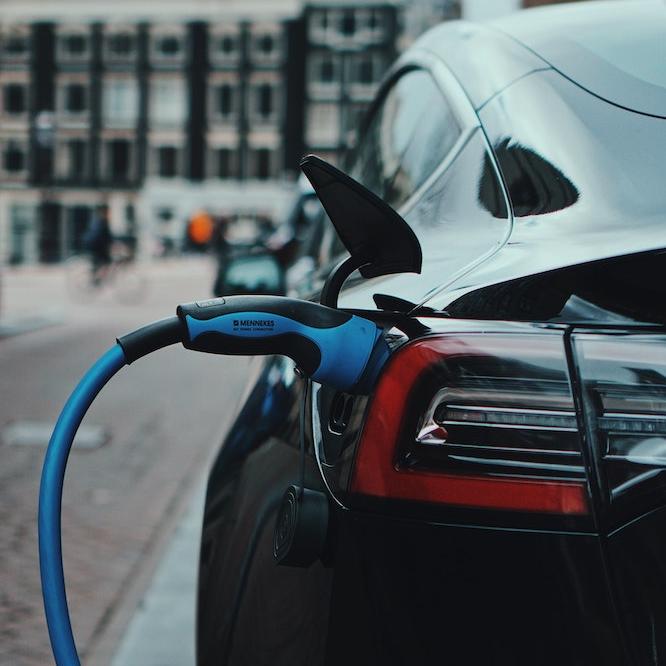
It's hard to argue against the notion that electric vehicles (EVs) are the future of the automobile. By 2035, both the European Union and California have said they will cease to allow the sale of cars powered by the internal combustion engine. Meanwhile, China, a country which already accounts for half of all global EV sales, has crossed the threshold where 25 percent of new car sales are electric.
Looking ahead, demand for EVs is only going to increase. But even at the current level of EV production, the auto industry is already facing some very real supply chain constraints that it will have to overcome in order to scale up the necessary battery production. To convert the world's auto fleet to EVs is going to need some serious innovation.
During the BNEF Summit in San Francisco last week — a meeting of the minds focused on the convergence of transport, energy and technology — the state of play for EV battery technologies was addressed in depth, and it's a tale of both challenge and opportunity.
The challenge: Battery costs are on the rise again amidst strained materials supply
Here's the challenge: Although EVs are still more expensive to produce than comparable internal combustion engine (ICE) cars, over the last decade, the burgeoning EV market has coincided with the steady fall in EV battery cost. Until recently, it seemed we were close to seeing battery costs falling to $100 per kilowatt-hour — the holy grail that will enable EVs to reach price parity with ICE-powered cars.
Unfortunately, that downward cost trend has now reversed. That's because the price of battery materials have started to increase due to constrained supplies of lithium, cobalt, manganese and nickel. As a result, batteries won't reach the $100-per-kWh level until 2026, said Evelina Stoikou of BloombergNEF, two years later than the research provider previously predicted.
Consequently, at least in the short term, automakers are scrambling to shore up supplies. This is manifesting in aggressive hedging within the industry to partner with raw materials suppliers, Stoikou said at the event. And beyond forging partnerships, some automakers are investigating vertical integration, such that some might even take ownership of certain raw materials mining.
As a result, the industry is already in somewhat of an arms race just to meet today's needs. But, going forward, these supply constraints will drive innovation. In order to realize a global fleet of EVs, batteries will need to come to market which reduce or eliminate certain components that are difficult to source reliably, responsibly and affordably.
U.S. startups explore new battery technologies for a low-carbon future
In a panel discussion at the BNEF Summit, representatives from U.S. battery startup companies discussed how the country can deliver competitive batteries in the future against this backdrop of fierce competition.
Today, China holds the competitive advantage. Batteries made there are already 24 percent cheaper than those made in North America. This is aided by the fact that China is a major supplier of lithium globally, while battery technologies there benefit from strong policy support by the Chinese government and robust investment in the activity.
Of course, when we talk about EV batteries today, we are talking about lithium-ion batteries. All pure EVs on the road in America today are powered by them. The dominant lithium-ion chemistry in the U.S. is specifically lithium-ion NMC, so called because these batteries use nickel, manganese and cobalt (NMC) in their cell cathodes.
The industry has generally settled on lithium-ion NMC batteries because they deliver a superior energy density necessary for the vehicle ranges customers demand today.
These batteries have given us cars with 300 or more miles per charge. But panelist Celina Mikolajczak, chief battery technology officer for the California-based startup Lyten, asserted that if we seek a world with electrification for everyone, lithium-ion NMC is not going to get us there — pointing out there's just not enough nickel out there.
Lyten instead focuses on a lithium-sulfur technology, which Mikolajczak readily admits is a challenging chemistry to settle upon. Both sulfur and lithium are each unruly elements on their own, let alone in combination. But Mikolajczak and Lyten believe it's worth the effort as sulfur is abundant and cheap, while the chemistry offers good energy density and rapid charging capabilities.
Though Lyten's focus is lithium-sulfur, it's just one of a range of alternatives.
An established chemistry that is already becoming more important today is lithium-ion LFP, which replaces nickel and cobalt with iron and phosphorus in the battery cell cathode. A key benefit of LFP batteries is that, again, certain scarce elements are replaced by more abundant and less expensive ones. Iron and phosphorus are easy to get ahold of and don't depend on foreign supply. LFP batteries are also longer lasting, able to sustain more charge cycles than NMC batteries and are less susceptible to thermal runaway (and in turn, fire, which is always a good thing).
Pros and cons: Balancing tradeoffs in emerging battery technologies
Perhaps predictably, though, there's always a catch with the alternatives. For example, lithium-sulfur batteries suffer from the corrosive nature of sulfur, making these batteries traditionally short lived. LFP batteries, on the other hand, are less energy dense and heavier than NMC batteries, meaning they generally achieve shorter driving ranges.
This is not to say these impediments cannot be overcome. Rather, it illustrates that battery technologies are still firmly in the innovation and iteration stage.
Panelist Deanna Ahmed, VP of strategy, policy and sustainability at Michigan-based Our Next Energy (ONE), agrees that nickel and cobalt have to be minimized going forward. ONE's battery also incorporates LFP chemistry as a part of its “Gemini” architecture. However, the company's solution is a dual-chemistry battery which combines an anode-free cell that acts as a power reserve, feeding a LFP traction battery to propel the vehicle. In a proof-of-concept demonstration, ONE retrofitted a Tesla Model S with its Gemini battery, allowing it to travel 752 miles on a single charge. ONE believes EVs need to get double the range typically achieved today in order for customers to be truly past their range anxiety.
There's agreement, then, that eliminating cobalt and nickel are priority steps — especially as these elements are often sourced from politically problematic places. But eliminating lithium is another innovation that could potentially remove yet another supply-constrained element.
Natron Energy is working on a sodium-ion platform that eliminates mineral supply constraints altogether. CEO and co-founder Colin Wessells estimates the technology could be as energy dense as LFP batteries in 15 to 20 years. But this technology is unlikely to power vehicles any time soon: The chemistry is currently focused on static energy storage — and as we will need more energy storage as more renewables come online, it could be an important part of the battery mix as well.
Which tech is best?
Of course, it's dodgy territory picking future winners when it comes to emergent battery technologies. There have been lots of lofty promises made about new battery chemistries developed in laboratories that never seem to manifest successfully in the field.
But to pick one that's already gaining the most ground, you probably have to go with the aforementioned lithium-ion LFP batteries, at least in the short term.
Already, Tesla is using lithium-ion LFP batteries for its standard-range vehicles while it uses lithium-ion NMC batteries for performance- or extended-range cars that need the extra oomph. As EV drive trains become more efficient, decent range can be maintained with smaller and less energy-dense batteries. Additionally, smaller urban-focused EVs prevalent in some global markets see LFP batteries already dominating.
And perhaps very importantly, and to tie this into the U.S. Inflation Reduction Act (IRA), avoiding nickel and cobalt means LFP batteries can be produced using more North American-sourced materials. A requirement for benefits available through the IRA places limits on the amount of foreign-sourced materials that are allowed.
Further, the IRA could be a boon to U.S. battery technologies and innovators going forward. The panelists at BNEF agreed that the legislation will be useful for companies with proven technology to go to scale, due to the investment tax credits available. It's one thing figuring out a battery technology, and another to figure out production methodology at scale and start opening giga-factories. The IRA could help bridge that divide.
Also, available investment in battery technologies and manufacturing could help develop a domestic battery manufacturing workforce of skilled blue-collar occupations — which, as Lyten's Mikolajczak says, are the kind of blue-collar jobs we want in the country.
Image credits: Jenny Ueberberg and Precious Madubuike via Unsplash
Social Change is Crucial for Climate Action, But Brands Need to Use Their Influence Differently


Our overheating planet needs social change more than it needs to avoid the physical tipping points we've come to associate with climate disaster, according to a new study from the University of Hamburg. The researchers note that while progress has been made in numerous arenas — such as citizen action, fossil fuel divestment, and implementation of U.N. and legislative policies to curb emissions — consumption patterns and corporate behavior remain prime barriers in the fight against climate change.
Ultimately, one is likely the product of the other, with consumers reacting to the constant onslaught of advertising and social media influence designed to keep them buying with little regard for the real consequences for the climate.
Nowhere is this more obvious than with the push to replace internal combustion engines (ICE) with electric vehicles (EVs) instead of building a nationwide infrastructure of public transportation — as Curbed's Alissa Walker detailed in her extensive report last month, "An EV In Every Driveway Is an Environmental Disaster”.
"A green future, the story goes, looks a lot like today — it's just that the cars on the road make pit stops at charging stations instead of gas stations,” Walker wrote. "But a one-for-one swap like that — an EV to take the place of your gas guzzler — is a disaster of its own making: a resource-intensive, slow crawl toward a future of sustained high traffic deaths, fractured neighborhoods, and infrastructural choices that prioritize roads over virtually everything else.”
Truly, a low-carbon future requires systemic change, with society organized not around the personal passenger vehicle but around community and getting the most out of transportation resources through integrated public transit. Swapping out ICE vehicles for EVs does nothing to curb the overconsumption problem. If anything, it intensifies it — with many consumers under the mistaken impression that prematurely replacing their gas-powered car or truck somehow helps the environment.
If anything, staying the course on cars represents a refusal to allow social change, with governments and automakers working together to keep the industry going strong in spite of the environmental and social costs.
And while consumers are consistently blamed for their desires, there is no denying that many of those wants and needs are manufactured by corporate interests and used to sell everything from shiny new vehicles to fast fashion. Would Americans really be so eager to shell out an average of almost $6,000 annually per household on loan payments and car insurance alone if not for the incessant advertising campaigns convincing us that we'll find freedom, or love, or whatever else we desire in our next brand new car?
Would young people really care about being seen in the same outfit twice if the fashion world didn't shove the message down their throats that it's a bad thing? Would fast fashion — with garments that notoriously fall apart after just a few washes — have much of a market if clothing companies didn't pay influencers to a model a one and done lifestyle?
Putting the onus of change on consumers, even as corporate interests invest in convincing them to do more of the same, is precisely why social change is not forthcoming at the rate that is needed. Indeed, while Americans say they are willing to alter their lifestyles to curb climate change, those who rely on their overconsumption aren't going to give up trying to sell them more than they need any time soon.
The study, titled Hamburg Climate Futures Outlook, concurs with the U.N.'s determination that humanity will not be able to keep global temperatures from rising 1.5 degrees Celsius as set out in the Paris Agreement on climate change. The researchers emphasize the need for social change now versus the current focus on individual physical tipping points like melting ice sheets that won't have much effect on temperatures until 2050.
"The question of what is not just theoretically possible, but also plausible — that is, can realistically be expected — offers us new points of departure,” researcher Anita Engels of the University of Hamberg said in a statement. "If we fail to meet the climate goals, adapting to the impacts will become all the more important.”
Unfortunately, corporate and billionaire interests appear more than willing to force humanity to adapt as they sacrifice the habitability of much of the planet in order to continue business- and consumption-patterns-as-usual.
For companies aiming to become part of the solution on climate change, the Outlook recommends moving beyond the facility level (Scope 1 emissions) to address emissions across the value chain (Scope 3) — particularly how companies influence and interact with their stakeholders. If governments can come together transnationally, and non-government actors like companies take action against climate change within their entire scope of influence, these crucial social tipping points could come closer into reach.
Image courtesy of the University of Hamburg
Black-Owned Businesses Are Outperforming, But They Need More Support
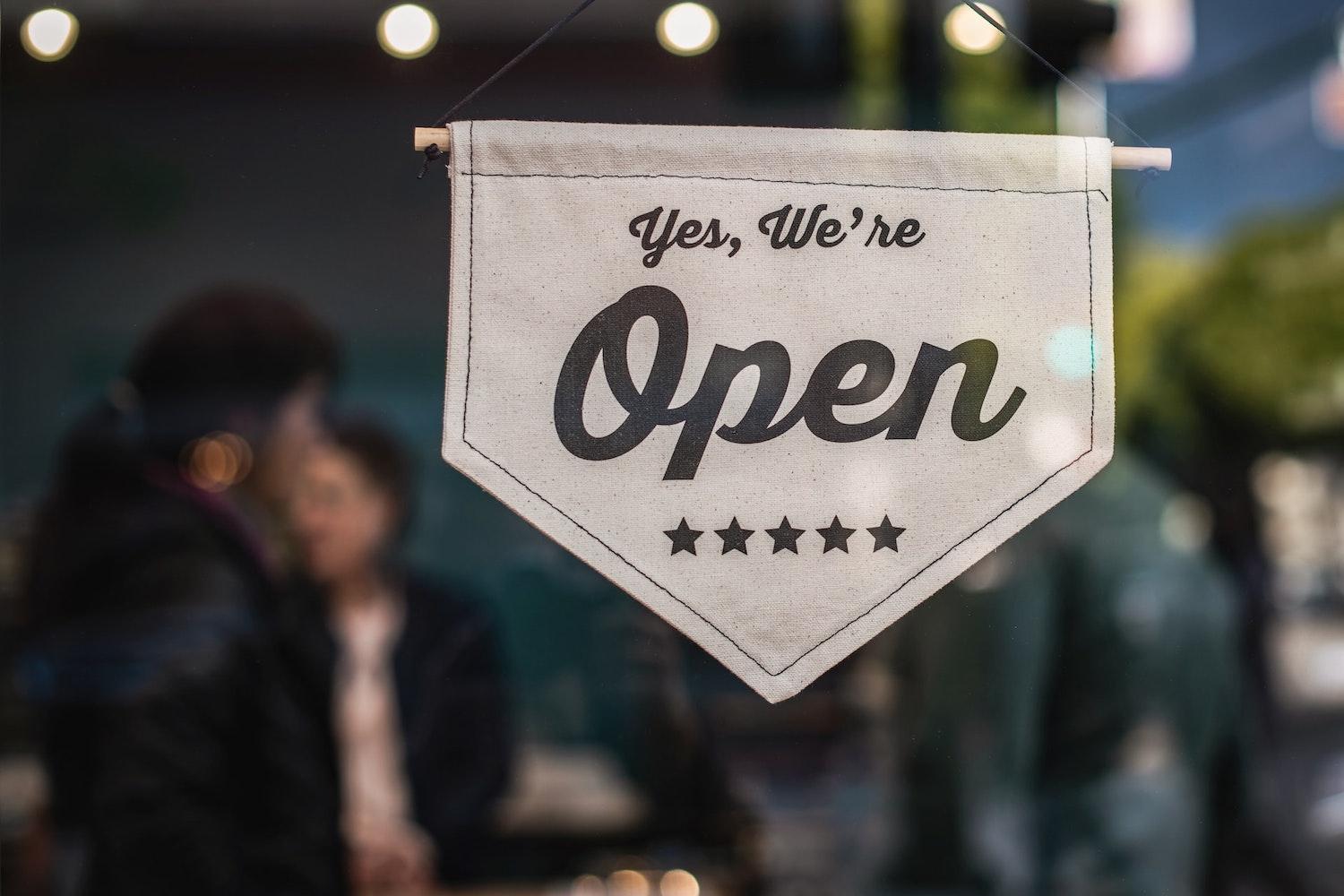
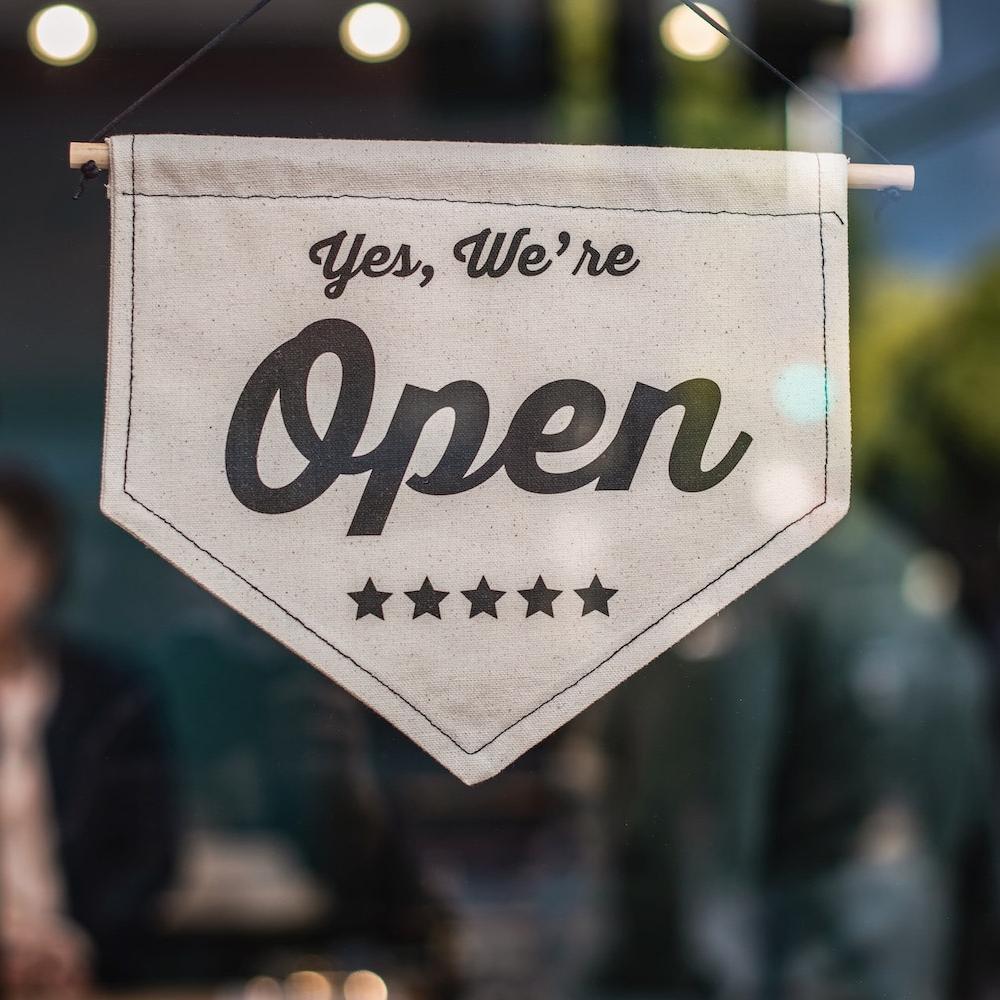
After being hit hard in the early months of the pandemic, Black American business owners have bounced back in a big way. By around this time last year, the U.S. was home to over 30 percent more Black-owned businesses than before the pandemic, a trend driven largely by Black women. Since then, new small business applications from Black entrepreneurs have continued at a "record-setting pace," said Bridget Weston, CEO of SCORE, a nonprofit network of volunteer business mentors.
It's not just the number of Black-owned businesses that's growing. Black business owners reported a 23 percent jump in annual revenue last year, more than double the growth rate recorded by U.S. small businesses overall. Black-owned small businesses also added employees at double the rate of all other U.S. businesses, according to recent data from SCORE.
Even though they're outperforming their peers, Black entrepreneurs told SCORE they still find it a challenge to secure funding and establish trusted banking relationships. "Black business owners are thriving, but face unique challenges no matter what their business stage," Weston said in a statement last week.
The broader business community has an opportunity to offer their support to amplify the impact Black-owned businesses have in local communities and the economy.
SCORE and others offer mentorship for Black entrepreneurs
SCORE, the nation's largest network of volunteer business mentors and a resource partner of the U.S. Small Business Administration, launched SCORE for Black Entrepreneurs in 2021 to better connect with this founder group. The program includes business resources, free workshops and training, and access to SCORE's network of experienced mentors.
That last point in particular is invaluable, as Black entrepreneurs are less likely than their white peers to have access to the mentorship networks that could help them build their businesses.
Through its free network, SCORE connects experienced business people willing to volunteer their time with entrepreneurs who can benefit from their guidance and connections. SCORE mentors do sessions in person, virtually or via email.
"Without my mentor and SCORE, I would not have been able to get the funding I needed to grow," said Lenora Ebule, a member of SCORE's entrepreneur network in Memphis and founder of Bailan Spice, which specializes in African-inspired spice blends. "I started with one store with one product and I have gone to an entire range of nine products in more than 30 stores, including Kroger. Working with SCORE has helped me tremendously and I believe it would help any business."
Likewise, a growing number of businesses are realizing the benefit of opening up their networks and expertise to the burgeoning community of Black business owners. Some of the big financial players — including Mastercard, American Express, Chase Bank and Bank of America — now offer expert mentoring as part of their outreach to Black entrepreneurs. Meanwhile, efforts to source more from Black-owned businesses, including Target's pledge to spend over $2 billion with 500 Black-owned brands by 2025, are opening up new doors to Black founders.
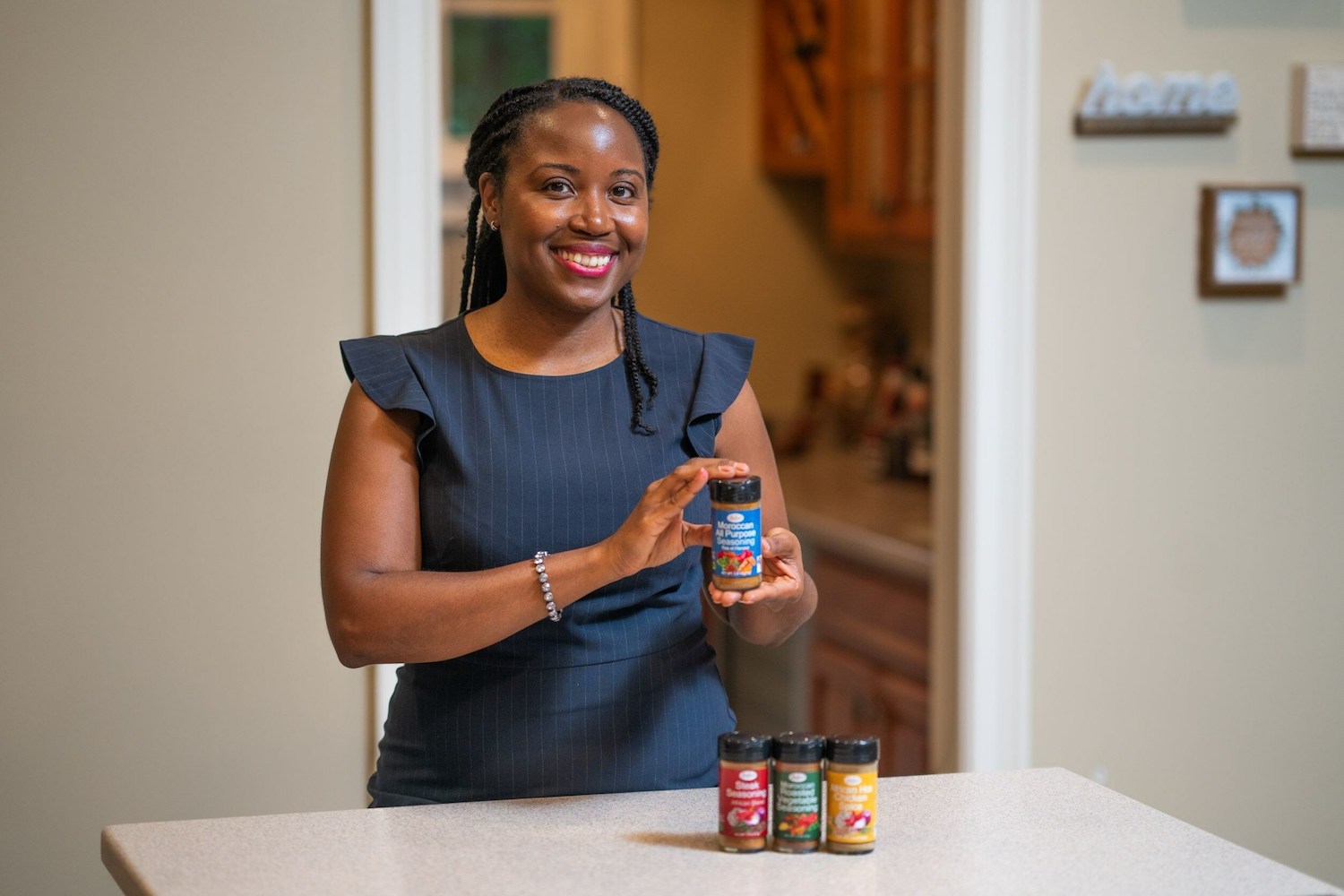
Nex Cubed lends VC support with $40 million fund targeting HBCUs
Black entrepreneurs have historically received less than 2 percent of the venture capital funding provided in the U.S. That began to change as companies made new commitments to racial justice after the murder of George Floyd, and Black founders received a record amount of VC funding in 2021. But the good news didn't last long: As markets worsened and business leaders began shifting their attentions elsewhere, VC funding for Black-owned businesses plummeted by 45 percent last year, compared to a 36 percent drop for all businesses.
On this front, the early-stage VC firm Nex Cubed is stepping up to lend a hand with a planned $40 million accelerator for startups founded by students, alumni and faculty at historically Black colleges and universities (HBCUs).
The fund officially launched on Monday with an initial $5 million investment from Costco, and the first cohort of eight to 10 businesses will be announced in the spring, the Plug reports. The fund builds on California-based Nex Cubed's HBCU Founders Initiative, an independent nonprofit launched in 2021 to support HBCU students and alumni along their entrepreneurial journeys while encouraging them to pursue startup solutions that close the racial wealth gap.
Despite the VC hiccup last year, the economic growth seen by Black-owned businesses proves they are still a massive opportunity for funders in the years ahead. “From a financial investment perspective, this remains a huge blue ocean for people to dive in,” Pocket Sun, co-founder and managing partner of SoGal Ventures, a VC firm devoted to supporting women and diverse entrepreneurs, told CNBC last week.
Keeping up the momentum to help Black-owned businesses thrive
Corporate initiatives launched since 2020 have the potential to offer a major boost to Black-owned businesses in the years to come. Along with commitments from mega-retailers like Target to spend more with Black-owned suppliers, 25 top companies including Macy's and Sephora signed the 15 Percent Pledge to ensure 15 percent of their shelf space is dedicated to Black-owned brands. Corporate programs like Mastercard's Strivers Initiative and the American Express-led Coalition to Back Black Businesses offer room to grow in the form of millions of dollars in grants to Black founders.
But it's vital to keep the momentum going. Black creators recently told AdAge they're already seeing fewer brand partnerships this Black History Month, as the wealth of opportunities on offer from brands in 2020 began to dry up.
As we continue to challenge brands to stick to their pledges and bolster this high-potential founder group, individuals also have a role to play. Shopping at Black-owned businesses in your area helps ensure they'll stay afloat for years to come, and directories like We Buy Black and EatOkra make it easy. "It's so important for us to engage, because it's a very specific community that's drawn to us," software developer and EatOkra founder Anthony Edwards Jr. told Salon. "We love enabling people to find things in their own neighborhood that they might have passed a thousand times but just didn't know."
Image credits: Tim Mossholder/Unsplash and RF._.studio/Pexels
Black-Owned Whiskey Brand Raises a Glass to HBCUs


Uncle Nearest Premium Whiskey recently announced the launch of its HBCU Old Fashioned Challenge, a nationwide initiative to raise $1 million for historically Black colleges and universities (HBCUs) and raise awareness about the role HBCUs play in workforce diversity and economic mobility.
"Many have opinions about Deion Sanders’ decision to move from Jackson State, an HBCU, to Colorado. I will tell you what I know to be true: Coach Prime put a much-needed spotlight on how HBCU programs can compete if they are properly funded," said Fawn Weaver, founder and CEO of Uncle Nearest, in a statement. "He showed us what one person with influence, shining a light on HBCUs, can do to help."
The nation’s 58 HBCUs constitute just 3 percent of the higher education institutions in the U.S., but they enroll 10 percent of all African-American college students and produce nearly 20 percent of all African-American college graduates. Many of these graduates have gone on to become high achievers in American society, making up 40 percent of African-American judges, 50 percent of African-American doctors and lawyers, and 40 percent of African-American engineers in the U.S. Notable HBCU alumni include the late Supreme Court Justice Thurgood Marshall, the poets Langston Hughes and Toni Morrison, the actors Phylicia Rashad, Samuel L. Jackson and Debbie Allen, and the inventor George Alcorn.
Still, many HBCUs are underfunded — contributing to lower graduation rates due to student debt and lack of resources, as well as understaffing and underrepresentation of Black faculty members.
Weaver noted that enrollment in HBCUs "grew tremendously" after Beyoncé’s 2019 documentary, "Homecoming," which was praised as a celebration of African-American culture and education with HBCUs as the foundation of that message.
"I am certainly no Beyoncé, but I have a spotlight on me, and it’s my greatest honor to be able to shift that spotlight where it should be — on our incredible historically Black colleges and universities," Weaver said. "When I reached out to share this program, so many of them asked me, ‘What can we do to help?’ I told each of them that I didn’t want them to do anything. It’s our turn to be torchbearers and give back, asking nothing in return."
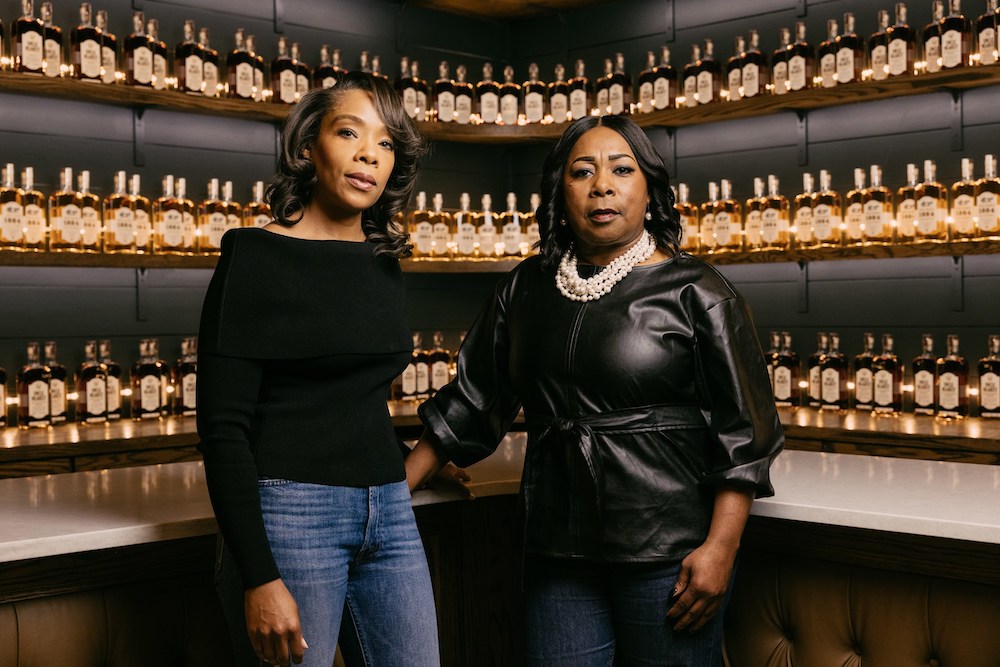
The Uncle Nearest Old Fashioned Challenge was launched on Martin Luther King, Jr. Day, in order to spotlight the legacy of HBCUs in King’s life and work. Both King, who enrolled in college at the age of 15, and his father, Martin Luther King, Sr., were alumni of Morehouse College, a historically Black men’s liberal arts college in Atlanta. The challenge extends through March, which is Women’s History Month, as an homage to Spelman College, a historically Black women’s college in Atlanta and the No. 1 ranked HBCU in the U.S.
Through the HBCU Old Fashioned Challenge, which runs through March 31, consumers may participate in one of four ways:
- For every Uncle Nearest Old Fashioned sold at participating bars and restaurants, $1 is being donated to the challenge.
- Uncle Nearest is donating $1 for each bottle of whiskey sold at participating online and brick-and-mortar retail stores.
- ReserveBar is selling Old Fashioned Cocktail Kits, featuring a bottle of Uncle Nearest as well as syrup and bitters from Hella Cocktail Co., a Black-owned bitters and soda company. For every kit sold, both Uncle Nearest and ReserveBar are donating $1 to the challenge.
- During the challenge, fans of Uncle Nearest whiskeys can also submit a photo of a homemade Uncle Nearest Old Fashioned at www.oldfashionedcocktail.com, and Uncle Nearest will donate $1 for each image received.
Thus far, the challenge has garnered an enthusiastic response from the company’s partners and distributors, said Kate Jerkens, senior vice president of global sales and marketing for Uncle Nearest.
"They all want to participate," she told TriplePundit. "Some of them are one-upping us and say, ‘You’re doing a dollar, we’re doing $2.' We’ll take it, we love it. We’ve gotten so much incredible support and people behind it really wanting to stand up."
The top-selling Black-owned spirits brand in the world, Uncle Nearest is named for Nathan "Nearest" Green, a once-enslaved person who taught his distilling techniques to Jack Daniel, founder of the Jack Daniels Tennessee whiskey distillery.
Emancipated after the Civil War, Green was hired as Jack Daniels' first master distiller and is the first African-American master distiller in the U.S. Green’s great-great-granddaughter, Victoria Eady Butler, is Uncle Nearest's master blender and the first known Black woman master whiskey blender in history.
The Old Fashioned Challenge raised $200,000 by Feb. 1, and the distiller hopes it will become a "tent pole" for further efforts that will be "repeated year after year," Jerkens said.
"There are so many Americans in the last few years who say they want to do better for our fellow Americans, or want to know how to help or how to become more of an ally or more of an advocate," Jerkens told us. "Funding HBCUs is giving back to Black Americans. It is a win-win for everyone. Go enjoy a cocktail with a friend. Talk to them about HBCUs and their relevance in our country and in the history of African Americans, and your donation is going to the HBCUs."
Images courtesy of Uncle Nearest Premium Whiskey
CVS Took on Big Tobacco Nine Years Ago: Is Big Religion Next?
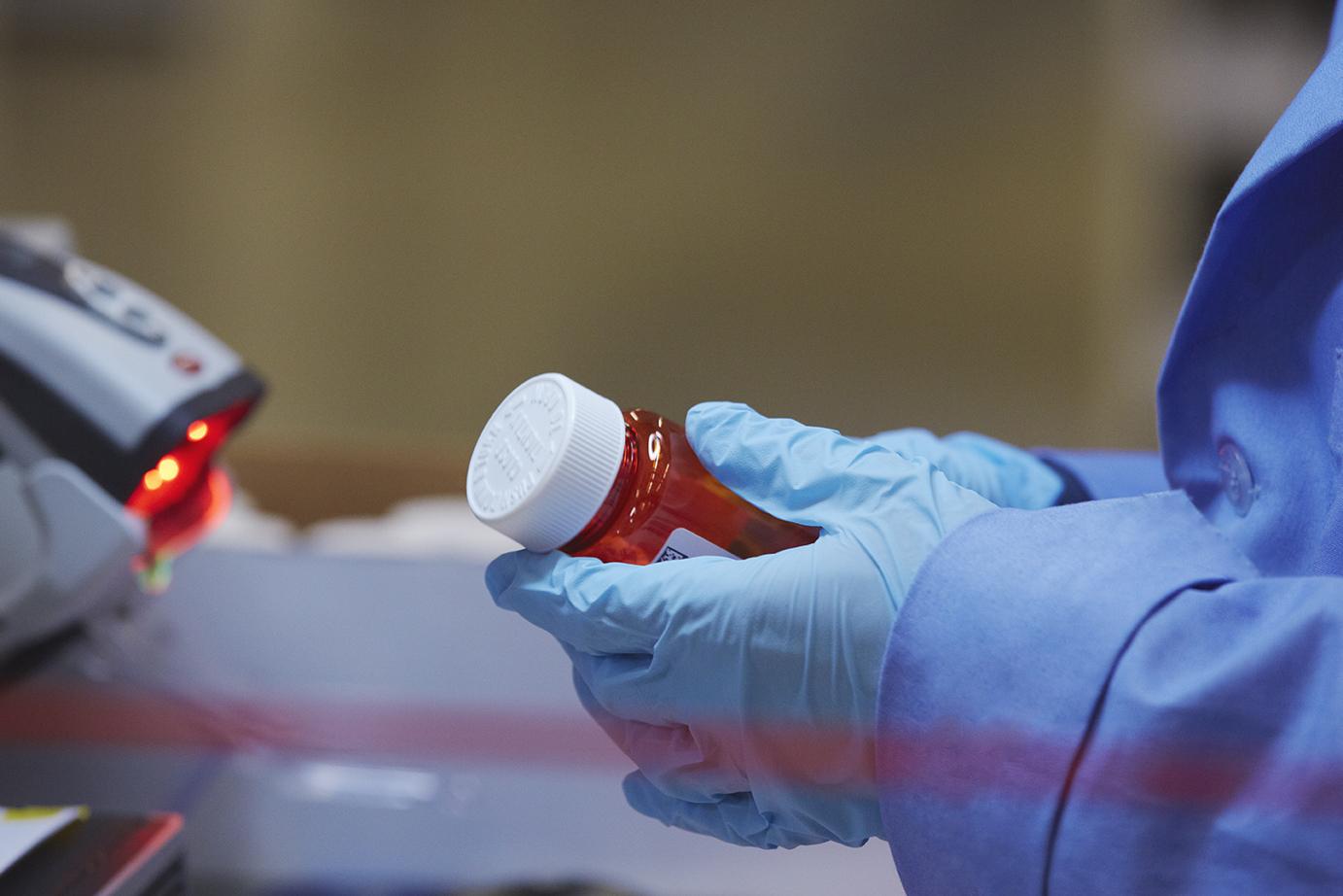
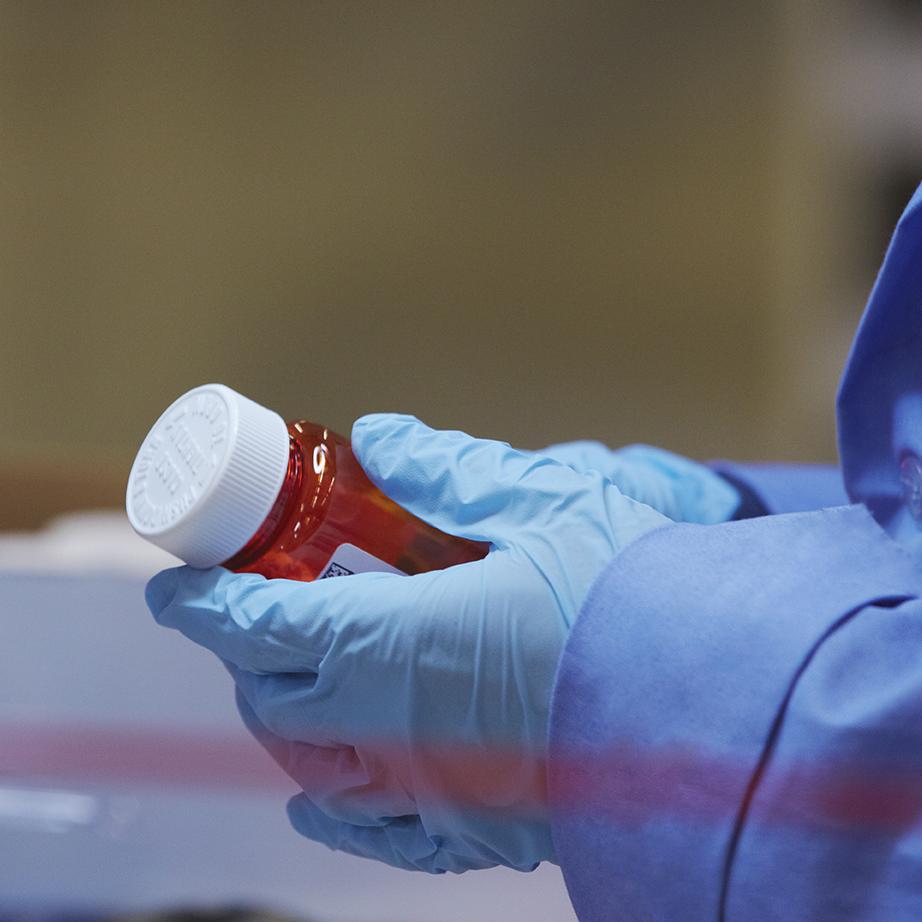
CVS Health pulled all tobacco products from store shelves almost a decade ago and never looked back. Now, the retail giant is facing a challenge of a different sort as religious extremists exert their leverage to ban access to birth control and abortion. CVS has taken some steps to accommodate religious beliefs in the past, but now the company has been pushed into a corner and it may just come out swinging.
CVS expands its public health mission
CVS has been evolving from a simple drug dispensary to a community healthcare provider since 2006 when it purchased the firm Caremark Rx. CVS also acquired Coram, a specialist in home infusion therapies for diabetes and other serious illnesses, seven years later.
In 2014, CVS stopped selling tobacco, in accordance with its new corporate name CVS Health and the launch of its new MinuteClinic and telemedicine services. The company took the hit on tobacco sales with a long-term business plan in mind.
“Eliminating $2 billion in sales is not something that is done every day by a Fortune 12 publicly-traded company…despite this loss in revenue, we were willing to take that risk, to ensure a positive impact on the long-term health of our customers, clients and colleagues,” CVS Senior Vice President Eileen Howard Boone said at the time.
CVS’s tobacco ban quickly had a discernible impact on public health. By 2017, studies began to show that cigarette sales in states with CVS stores declined compared to those without. That result is consistent with other studies showing that smokers reduce or stop smoking when retailers, workplace rules or government regulations cut their access to tobacco products.
CVS is backed into a corner on birth control
Those results lend more weight to the potential for CVS and other retailers to make a significant, positive impact in other areas of public health, including the health of women, girls and other pregnancy-capable people.
That’s where things get complicated. Under Title VII of the 1964 Civil Rights Act, employers are required to make reasonable accommodations for their employees’ religious beliefs, unless doing so would cause an undue hardship for the employer or other employees. For CVS and other retailers, that has meant allowing employees to opt out of conducting certain transactions — including those related to reproductive care.
As critics have pointed out, the opt-out policy encumbers the customer experience and can cause delays that impact health and well-being. Opt-outs can also compromise the customer’s privacy and interfere with their freedom to practice birth control in accordance with their own religious beliefs.
CVS initially enabled its MinuteClinic nurses to opt out of prescribing or even discussing contraceptives. However, in 2021 the company put its foot down. The policy was revised to clarify CVS’s mission to provide public health services on a holistic basis, not a pick-and-choose basis dependent on religion.
Last fall, CVS spokesperson Mike DeAngelis explained the new policy to Becker’s Hospital Review: "MinuteClinic does not prescribe abortifacients or provide abortion services, but educating and treating patients regarding sexual health … have become essential job functions of our providers and nurses. We cannot grant exemptions from these essential MinuteClinic functions.”
The Becker’s article referenced lawsuits brought by former CVS nurse practitioners in Kansas and Virginia, both of whom claimed they were fired under the new policy. A third former CVS nurse practitioner filed a lawsuit in Texas last month over the same issue. As reported by NBC News and other media, CVS responded as before, explaining that “educating and treating patients regarding sexual health matters — including pregnancy prevention” are essential services at MinuteClinics.
The 23-year expansion of medication abortion
Under normal circumstances, CVS would have a good chance of prevailing in court. However, the circumstances are anything but normal. The Republican-appointed conservative supermajority on the U.S. Supreme Court has already indicated its enthusiasm for throwing settled law and objective facts out the window in support of partisan political positions on reproductive rights and gun safety, among other issues.
In the meantime, another battleground has emerged over the growing use of medication abortion.
Medication abortion has been widely available in the U.S. since 2000 when the U.S. Food and Drug Administration approved the proprietary drug Mifeprex to terminate pregnancies up to seven weeks. The termination is a two-step process in combination with a second drug, misoprostol.
Since then, the FDA has extended the use of Mifeprex to 10 weeks of pregnancy, approved a generic version of mifepristone, and established a standard certification process called the Mifepristone REMS Program.
This trend toward easing access to mifepristone accelerated further during the COVID-19 pandemic when the FDA dropped a longstanding requirement for in-person visits and issued guidelines that permitted telemedicine services and mail delivery.
Healthcare providers advocated strongly for the change. In 2020, the American College of Obstetricians and Gynecologists put out a statement saying: “Clear science and the consensus of the medical community underscore that mifepristone is a safe medication and that the FDA’s in-person dispensing requirement provides no medical benefit to patients.”
U.S. FDA ups the ante on abortion access
Last month the FDA expanded access to medication abortion even further, with new guidance for the REMS Program. For the first time, pharmacies can now dispense prescriptions for mifepristone if they are certified to do so under the REMS Program. The FDA also affirmed that certified pharmacies can dispense abortion drugs by mail.
The agency further indicated that certified pharmacies are not allowed to permit any interference with the 10-week timeline. “Certified pharmacies must ensure mifepristone is dispensed to the patient in a timely manner,” it declared.
That directive appears to support pharmacies like CVS in their efforts to improve access to essential healthcare services, without any delay or inconvenience due to religious objections.
Both CVS and Walgreens have said they are taking steps to be certified under the REMS Program, though they reportedly plan to dispense mifepristone only where permitted by state law.
As for mailing mifepristone across state lines, that is currently a matter of dispute. In December, the U.S. Department of Justice determined that the anti-abortion clause of the Comstock Law — which restricts materials sent through the mail — does not apply to drugs like mifepristone and misoprostol, because they are commonly used in a variety of non-abortion applications.
The gloves come off
The Justice Department also noted that mifepristone is a federally approved drug. Nevertheless, the attorney general of Missouri, Andrew Bailey, is leading a group of 20 state attorneys general who co-signed a letter warning both CVS and Walgreens against dispensing abortion medications by mail.
It's no surprise to see their objections are drawn from thin air. “Abortion pills impose far higher risks of complications compared to surgical abortions,” Bailey stated, in direct contravention of settled science.
It's also no surprise to see the list of co-signers overlap with the same attorneys general who have been railing against “woke capitalism,” including Texas Attorney General Ken Paxton.
Against this backdrop, the crusade against reproductive rights has become a crusade against big business. Leading U.S. corporations have yet to push back in any meaningful way, but the fight over mifepristone could be the straw that breaks the camel’s back.
In a related development, last fall anti-abortion groups brought a case to a federal court in Texas that could overturn the entire FDA approval and rule-making process, with widespread consequences across the entire pharmaceutical industry and related fields.
The Texas judge hearing the case is described as “a Trump appointee with longstanding affiliations with the religious right, including work as an attorney with a conservative Christian legal group based in the state.” Parties in the case have until Feb. 10 to complete their filings, and a decision is expected shortly.
The clock is also running out for U.S. businesses that profess to support diversity, equity and inclusion. The bottom-line and human consequences of providing financial support to right-wing politicians who pander to religious extremists is coming into sharp focus, and they are not pretty.
Images courtesy of CVS Health